OMA Building Plays Nice With Its Neighbors at Cornell
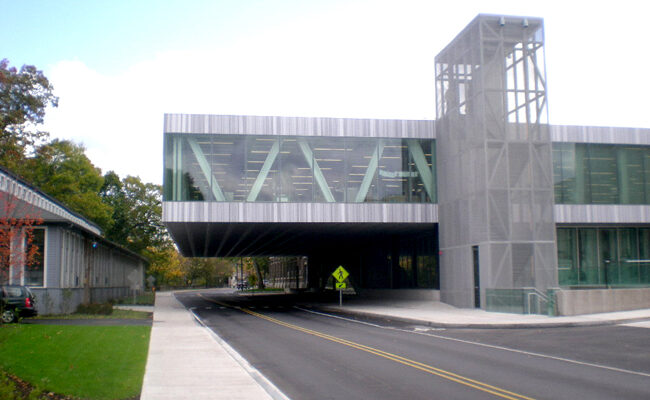
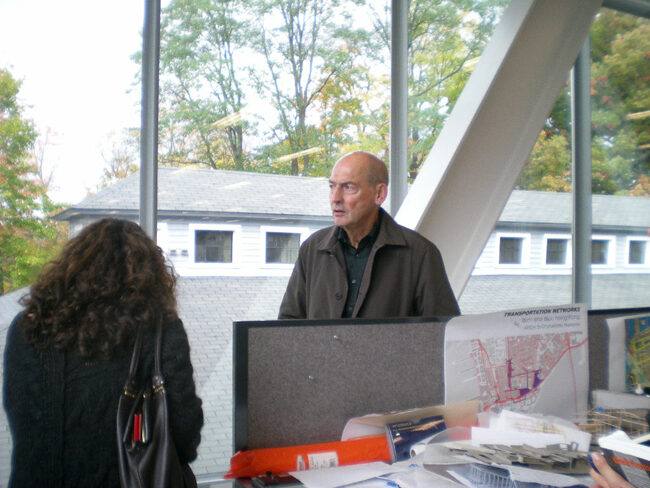
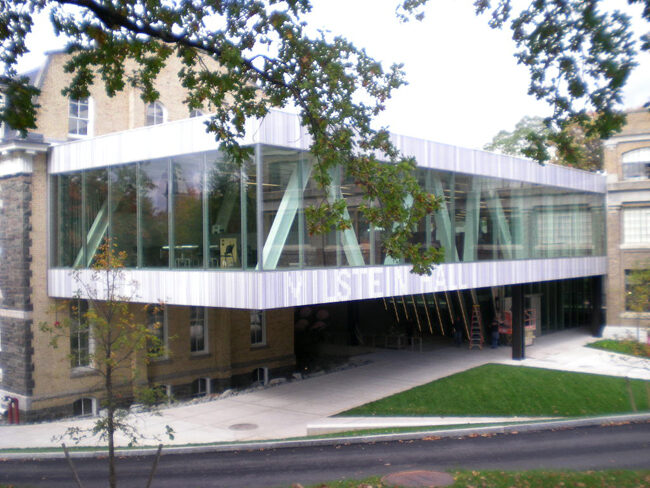
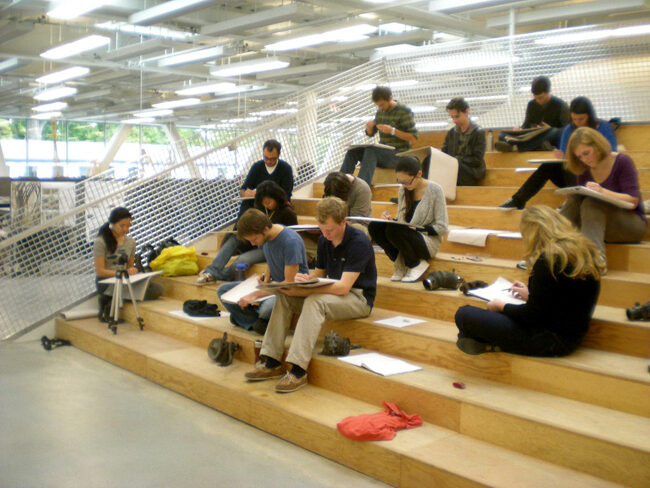
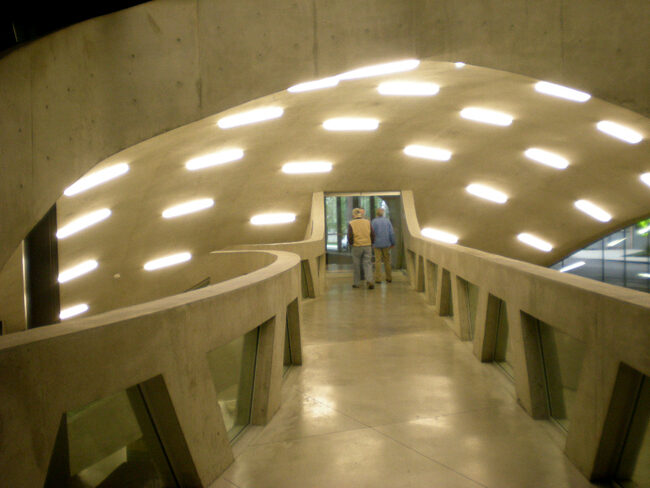
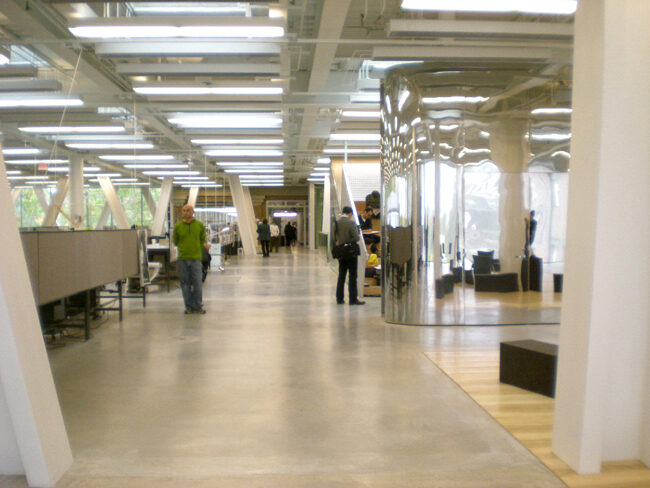
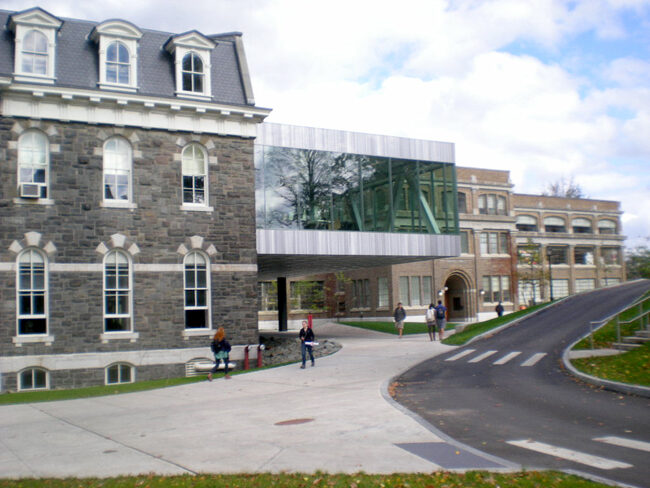
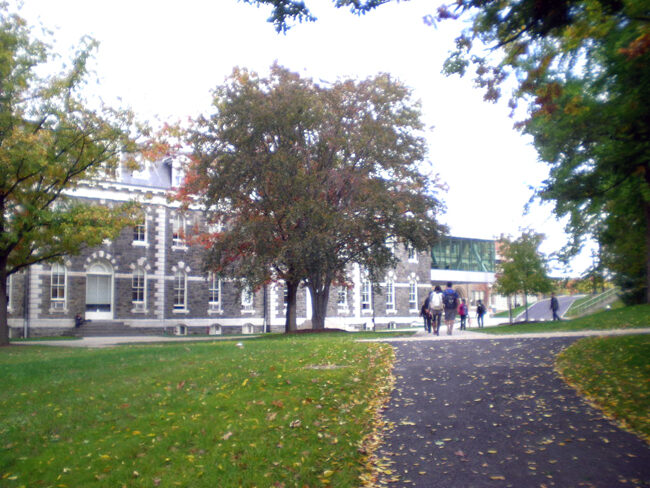












Rem's addition to Cornell's architecture school keeps a low profile on the university's famed Arts Quad but speaks louder on the other side.
| Photo ' Clifford Pearson |
|
The new 47,000-square-foot Milstein Hall cantilevers nearly 50 feet over an adjacent road. Rem Koolhaas led a tour of the building in late October. |
Rem Koolhaas and his Office for Metropolitan Architecture (OMA) partner Shohei Shigematsu showed off Milstein Hall, their 47,000-square-foot addition to Cornell's College of Architecture, Art and Planning (AAP) on October 23. The new structure connects two existing buildings to create a large, horizontal box at the second floor, while providing on lower levels a 253-seat auditorium and a 5,000-square-foot critique space under an interior dome.
Milstein sits behind Sibley Hall (a domed Neoclassical pile that anchors one end of the University's Arts Quadrangle) and links it to Rand Hall (an industrial building that had been converted into design studios decades ago). Barely seen from the Arts Quad, Milstein thrusts out in a grand, 25,000-square-foot plate that cantilevers almost 50 feet over an adjacent road and houses design studios in one sprawling space. By wrapping the studio space in floor-to-ceiling glass and pulling it over the road and toward a nearby gorge, OMA establishes a much more direct relationship between students and nature. A green roof with 41 skylights adds to this dialogue and brings daylight to the entire studio area.
Although workers were still finishing punch-list items during the tour, students and faculty had moved into the new building at the end of August. Koolhaas, who provided a critical look at the preservation movement in the exhibition Cronocaos at the New Museum in New York this past spring, said OMA was interested in "finding plausible relationships" between old and new buildings. Shigematsu, who runs OMA's New York office, explained that Milstein serves as a "gateway" to the North Campus on the other side of the gorge while maintaining a modest presence on the Arts Quad to the south.
The project has a checkered history, with two previous schemes (one by Steven Holl and the other by Barkow Leibinger Architects) having been abandoned by the school before former dean Mohsen Mostafavi brought in OMA. The earlier designs called for tearing down Rand Hall, but OMA decided to keep it and connect to it.
By bringing all design studios onto one open floor, the new building encourages a more collaborative kind of education, states Kent Kleinman, the current dean.
Look for more coverage in a future issue of Architectural Record.














